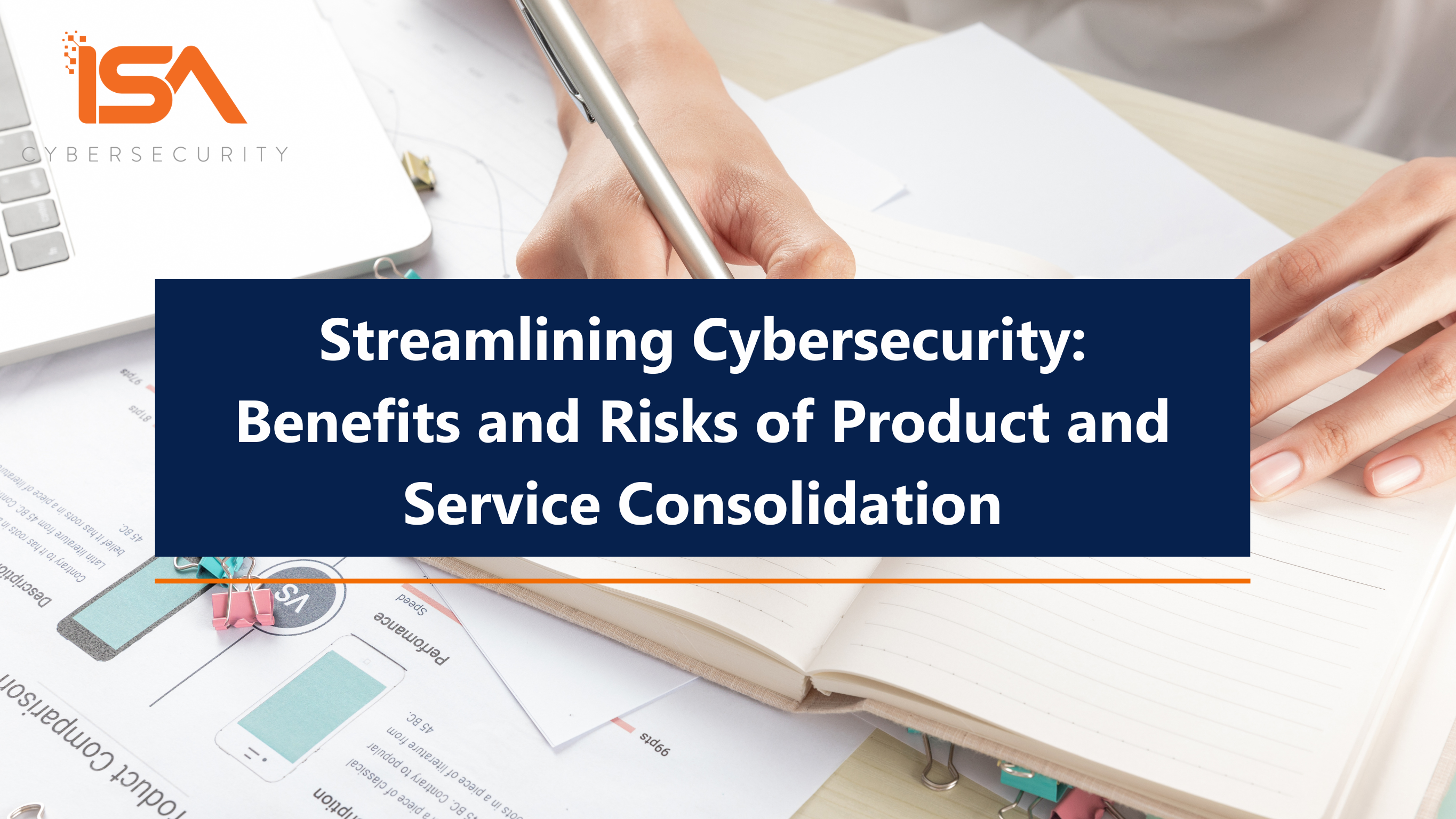SIEM (Security Information and Event Management) and XDR (Extended Detection and Response) are two technology solutions at the forefront of any conversation about cybersecurity. But what’s the difference between SIEM and XDR, which one is right for you, and how do you best implement them? In this article, we demystify these technologies to help you decide what’s best for you: SIEM, XDR… or maybe even both.
How are they similar?
SIEM and XDR solutions are both valuable components of a robust cybersecurity program, and share a number of fundamental similarities:
1. Improved visibility
Both SIEM and XDR offer improved visibility into activities on a network by collecting, aggregating, and correlating data from multiple sources across an organization’s IT infrastructure at high speed. This centralized visibility and alerting gives analysts and security teams a “single pane of glass”, allowing for comprehensive monitoring and insight.
2. Incident Response
A key similarity – and one of the most important aspects of SIEM and XDR solutions – is supporting incident response activities. The rapid correlation of data provided by these technologies gives internal teams the opportunity to mitigate, if not prevent, the damage caused by cyber attacks. Without this broad view of the network and the ability to see disparate events in context, incident response is often considerably more challenging, time-consuming and resource intensive. This lack of visibility also gives threat actors additional cover and stealth, enabling them to carry out cybercrime virtually undetected.
3. Cost Savings
The “single pane of glass” efficiencies offered by SIEM and XDR reduce time and effort required from analysts to find and respond to cyber threats. And improved incident response times mean reduced costs. On average, according to IBM’s Cost of a Data Breach Report 2023,[1] resolving a breach in fewer than 200 days can reduce costs by $1.02M (USD). The cost savings of the SIEM and XDR solutions don’t end there. The report suggests that organizations using a SIEM saved an average of over $200K (USD) on breach recovery over those without a SIEM.[2] Also, while specific figures weren’t provided for XDR solutions, even organizations using basic EDR solutions saved an average of over $174K (USD) over their less-protected counterparts.[3]

So how are they different?
Despite the essential defensive premises of SIEM and XDR, there are several key differences to consider between when deciding how they might fit into your cybersecurity strategy:
1. Service Objective & Operation
SIEM: SIEMs focus on centralized log aggregation and management for triggering alerts, supporting post-event analysis, and compliance. SIEMs excel at correlating huge volumes of data, identifying known threats, and generating alerts based on log data patterns and extensive sets of use cases. SIEMs will not typically act on the data beyond notifying the analysts monitoring the system. Most alerts triggered by a SIEM must rely on manual prioritization, or supporting technologies like Security Orchestration, Automation, and Response (SOAR) to reduce false positives and automate basic responses to events, or User and Entity Behavior Analytics (UEBA) tools to identify anomalous activities. SIEMs also offer the opportunity to identify situations that are of potential concern, but do not necessarily fall into the category of a security incident (e.g., alert if a server is running low on disk space or triggering application errors). This is an often overlooked, but valuable benefit of SIEM solutions.
XDR: XDR also features central log management, but the emphasis is on threat detection, investigation, and response with a focus on real-time threat management. Most XDR solutions offer a direct, proactive response to potential cyber incidents, leveraging advanced AI and machine learning to correlate diverse sources of information and detect sophisticated, multi-vector attacks – both known and unknown. XDR solutions typically include automated response mechanisms, such as blocking malicious activity, sandboxing files and processes, isolating potentially compromised systems, and rolling back actions to a safe state. This automation allows for faster and more efficient threat response: in some cases, an XDR can completely handle an incident and merely “inform” the security team that a threat was neutralized after the fact.
2. Compliance Support
SIEM: SIEMs are excellent tools for supporting compliance (e.g., for PCI DSS requirements), providing an immutable record of events for reporting and analysis purposes. Most SIEMs are designed to support long-term storage of massive data pools, and offer advanced reporting features.
XDR: XDR solutions also include storage capabilities, but typically focus more on shorter-term retention to support in-the-moment incident resolution.
3. Span of Monitoring
SIEM: SIEMs focus on log and event data, typically with an emphasis on network endpoints. More advanced SIEMs are evolving to incorporate AI and machine learning technology to offer advanced capabilities like mapping baseline network activity to trigger an alert if extraordinary traffic patterns are detected.
XDR: in addition to logs from network endpoints, XDRs can pull in data from cloud applications and services, email clients, and from other security layers and tools – for example, IAM systems, threat intelligence, vulnerability managements, and even SIEMs themselves – giving them a comprehensive view of the enterprise.
4. Implementation Complexity
SIEM: Requires significant management effort for integration, correlation, alert configuration, optimization, ongoing maintenance, and monitoring. Most SIEMs come with extensive libraries of use cases, and offer the capability of extensive customization to support integration with a wide range of log sources to design bespoke use cases for complex or non-standard environments
XDR: XDR solutions may require less management effort as they offer out-of-the box integrations, even with SIEMs themselves. XDR solutions are designed to support extensive API libraries and agentless monitoring of devices in order to make implementation easier.
5. Pricing Models
SIEM: Pricing models for SIEM are usually based on the volume of log data ingested and processed, with higher data volumes (usually measured in events per second (EPS) or flows per minute (FPM)) typically resulting in higher costs. Some vendors may also base pricing on the number of users or endpoints being monitored. Data retention and storage is also a key factor in understanding the pricing for a SIEM solution, with longer retention periods and larger storage capacities costing more.
XDR: Most XDR systems are priced per endpoint or user, with unit prices often decreasing for larger deployments. As with SIEM, however, retention periods and storage capacities will affect pricing as well.

What’s Better for You?
While both SIEM and XDR aim to improve an organization’s security posture, your decision on a solution will ultimately rest on your organizational needs, risk appetite and existing infrastructure. While XDR offers a more specialized and automated approach to threat detection and response, SIEMs provide alerts within a framework of broader log management and compliance capabilities.
There is no one right answer: indeed, some organizations will find that they need both solutions to provide a more comprehensive and resilient security posture.
Build or Buy?
Once you’ve chosen a direction, the decision whether to deploy your own solution or seek assistance from a managed service provider becomes your decision. Fortunately, the “build or buy” decision is usually clearer for organizations than choosing SIEM and/or XDR. In some cases, keeping things in-house is a necessity, no matter the cost. If you have specific data sensitivity or confidentiality requirements, or unique or legacy infrastructures that demand an internal solution, you may be obliged to implement services yourself. However, the trend with most organizations is to outsource their SIEM or XDR solutions, for five key reasons:
1. Cost-effectiveness
The most compelling reason to outsource SIEM and XDR deployment and management is cost. Working with an experienced partner can significantly reduce the total cost of ownership associated with designing and building infrastructure, licensing software, and deploying, supporting, and maintaining complex systems. It also eliminates the need for expensive recruitment, training, and retention of in-house cybersecurity staff, who are both specialized and scarce.
2. 24/7 monitoring and support
The complexity of configuring, implementing, optimizing, and managing your security solution is only part of the story. All of the network insights in the world cannot help you if you are not monitoring them around-the-clock. A managed service provider is there 24×7 to provide eyes-on-glass support, ensuring that security incidents are detected and addressed promptly, regardless of the time or day. This level of continuous coverage is often challenging and expensive to maintain with an in-house team. An experienced partner will also help filter the “noise” of false positives or informational “incidents”, reducing the burden on in-house staff. A managed services partner can easily handle more mundane incidents cost-effectively, only your staff in more serious situations requiring a team effort.
3. Access to specialized expertise
Managed service providers have dedicated teams of cybersecurity professionals with specialized knowledge, certifications, and experience in SIEM and XDR solutions. This allows organizations to tap into a wealth of expertise without having to develop it in-house, ensuring more effective threat detection and response. Re-inventing the wheel is costly and time-consuming: an experienced partner will have seen and overcome technical challenges that an individual organization will not have seen before. As an added bonus, a partner will have enhanced support relationships with the software provider, giving you faster access to higher-tier help desk personnel if necessary.
4. Faster deployment and scalability
Managed service providers have the experience to quickly configure and deploy SIEM and XDR solutions, reducing the time it takes for you to benefit from enhanced security monitoring. Working with an MSSP allows you to leverage their expertise and benefit from their accumulated experience gained from other deployments. This is something you cannot do on your own. Further, managed SaaS solutions are designed to scale up or down with an organization’s needs, allowing for flexibility without compromising security.
5. Focus on core business activities
There is an opportunity cost in implementing your own SIEM or XDR solution. Time spent on these important, but complex solutions, is time that cannot be invested in other areas of the business. By outsourcing the management of SIEM and XDR solutions, you can free up internal resources to concentrate on other core – or even transformational – business activities while still maintaining a strong security posture. This allows for better resource allocation and improves operational efficiency.
ISA Cybersecurity Can Help
Whether SIEM and/or XDR is right for you, ISA Cybersecurity has deep experience with these technologies, and over a decade in providing managed security services to organizations across all industries. We have success with local offices and global companies; public sector and private enterprise. Whether you’re starting your journey, looking for guidance on what’s next, or simply interested in outsourcing your SIEM or XDR management, we can help. Contact us today.
[1] ibm.com/reports/data-breach
[2] ibid.
[3] ibid.




